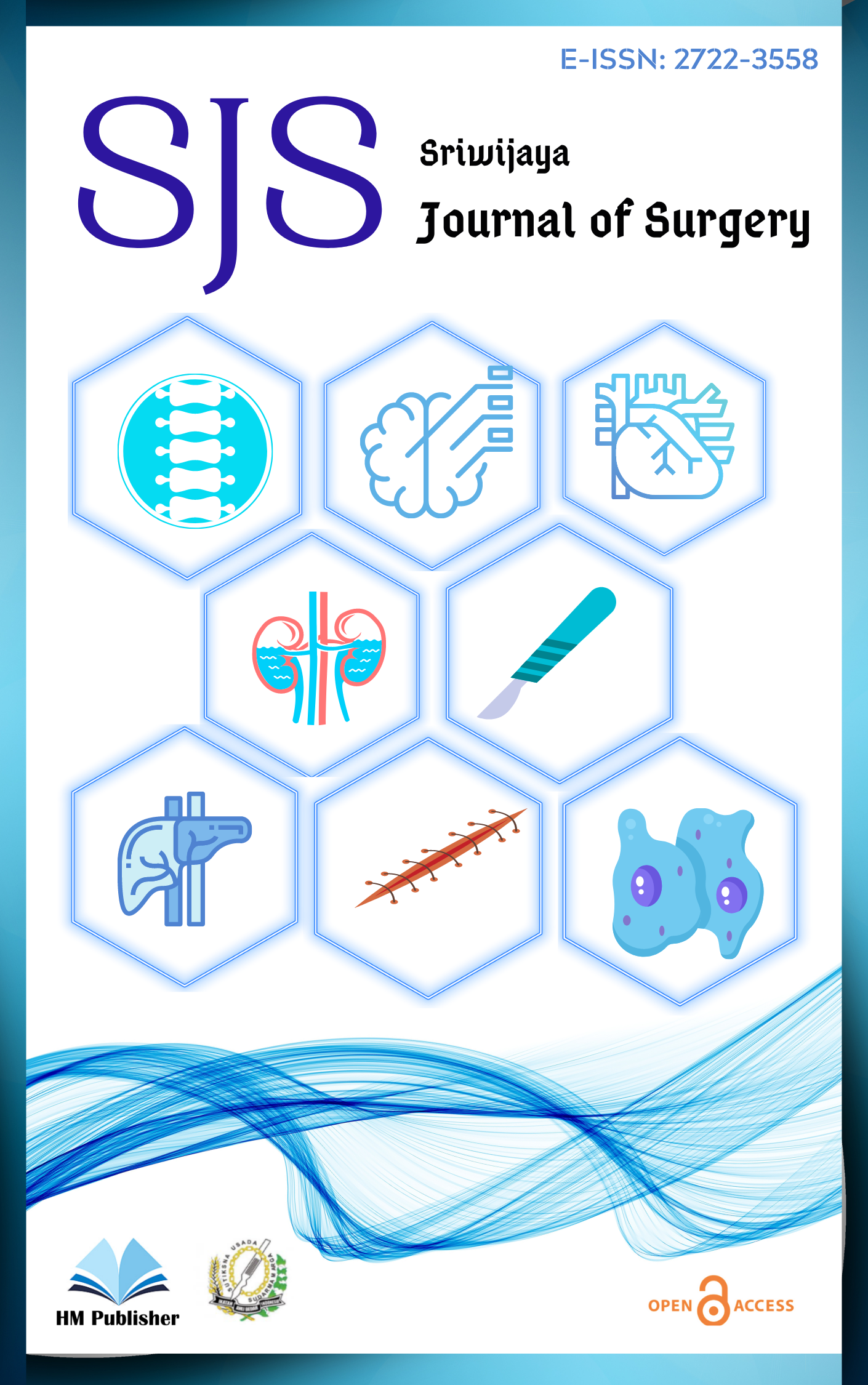Main Article Content
Abstract
Introduction: Wound dehiscence is a postoperative condition that can occur several days after surgery and requires special intervention. Various risk factors sucah as patients-related and surgery-related may influence the incidence of wound dehiscence. A good understanding of these risk factors is necessary to prevent the complication and decrease mortality and morbidity. This study aims to see the characteristics of patients affected by abdominal laparotomy who are treated with wound dehiscence at dr. Mohammad Hoesin General Hospital Palembang.
Methods: This research was a cross-sectional, restrospective descriptive study. Using secondary data from the medical records of Mohammad Hoesin Hospital, Palembang. Performed in the from January 2019 to December 2019. Samples were all patients who underwent abdominal laparotomy and diagnosed with post- operative wound dehiscence.
Results: There were 26 subjects participated who met study critera. Subjects with post laparotomy wound dehiscence were mostly male (69%). The largest age distribution is 40-59 years old (61.53%), with the average age was 48 years old. The most common type of surgery was emergency surgery (73%). The most common albumin level was hypoalbuminemia (76%). Subjects without diabetes melitus were the most common (88%).
Conclusion: Male patients, patients age 40-59 years old, underwent emergency operation, have low albumin level in blood and without diabetes melitus, are all the most common characteristic of patients diagnosed with post laparotomy wound dehiscence.
Keywords
Article Details
1. Authors retain copyright and grant the journal right of first publication with the work simultaneously licensed under a Creative Commons Attribution License that allows others to share the work with an acknowledgement of the work's authorship and initial publication in this journal.
2.Authors are able to enter into separate, additional contractual arrangements for the non-exclusive distribution of the journal's published version of the work (e.g., post it to an institutional repository or publish it in a book), with an acknowledgement of its initial publication in this journal.
3.Authors are permitted and encouraged to post their work online (e.g., in institutional repositories or on their website) prior to and during the submission process, as it can lead to productive exchanges, as well as earlier and greater citation of published work.

